
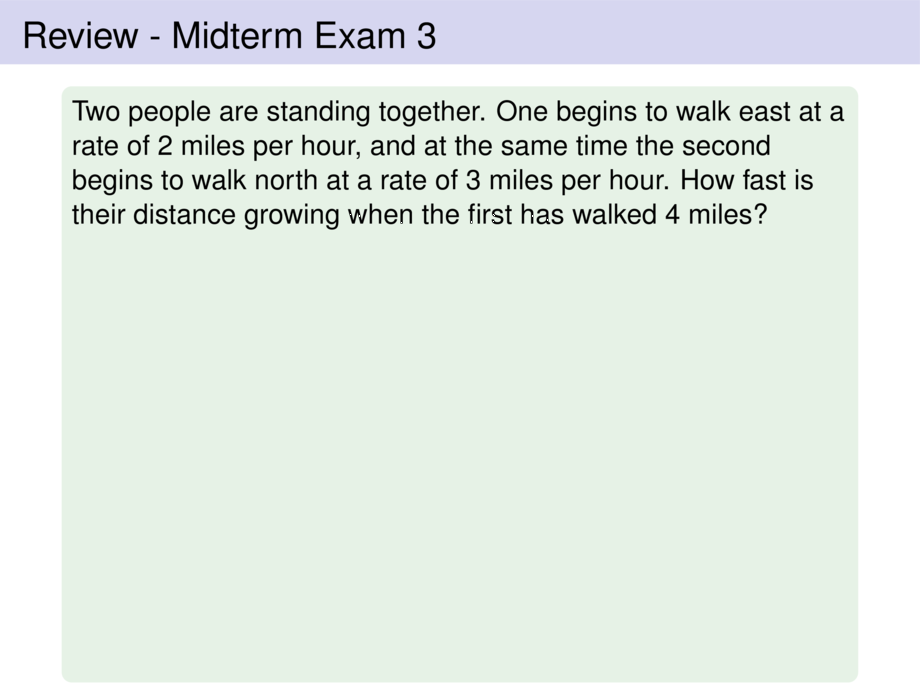
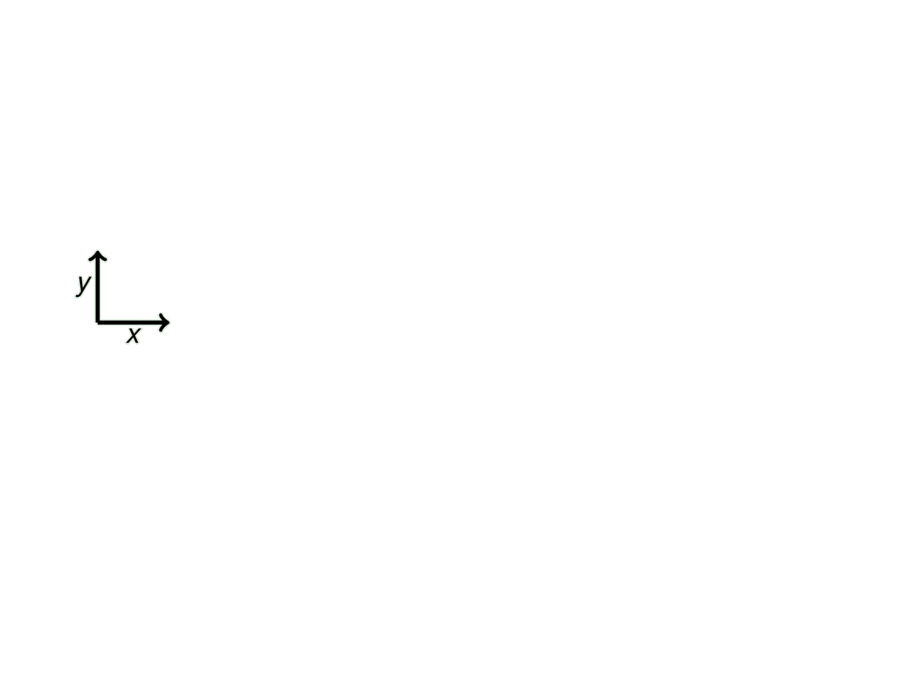


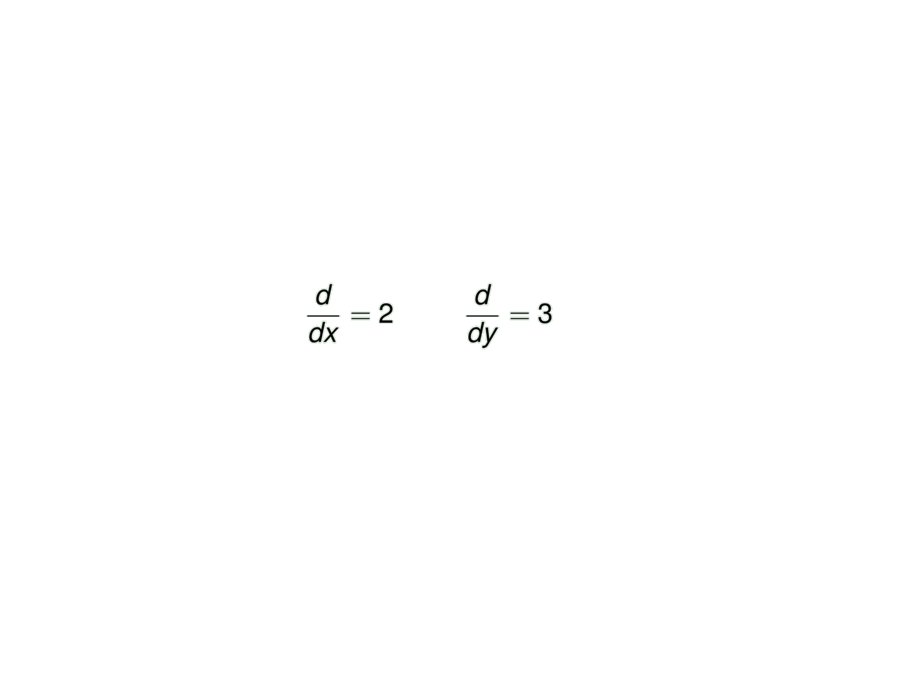
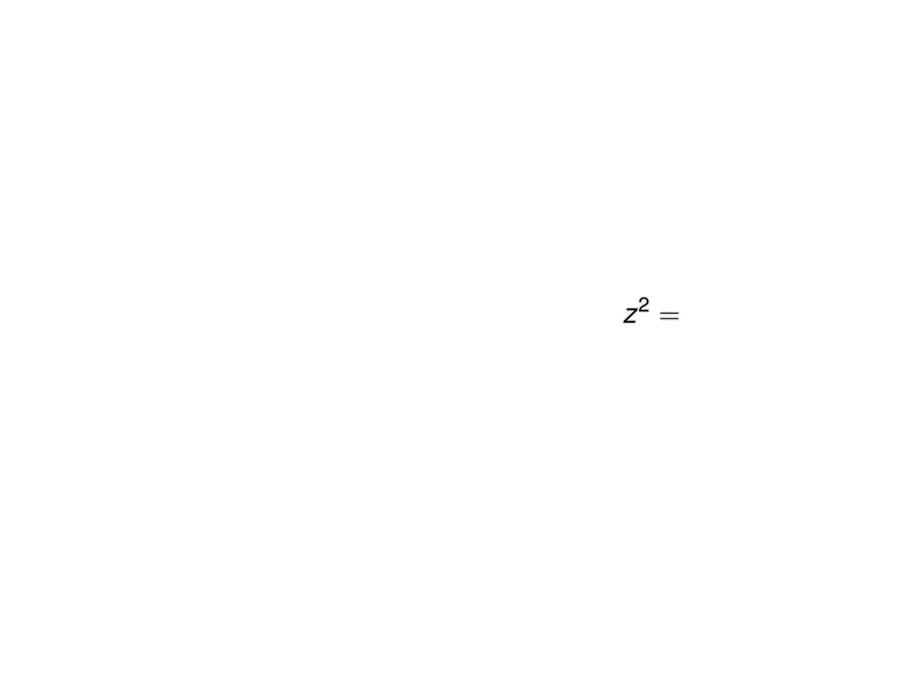
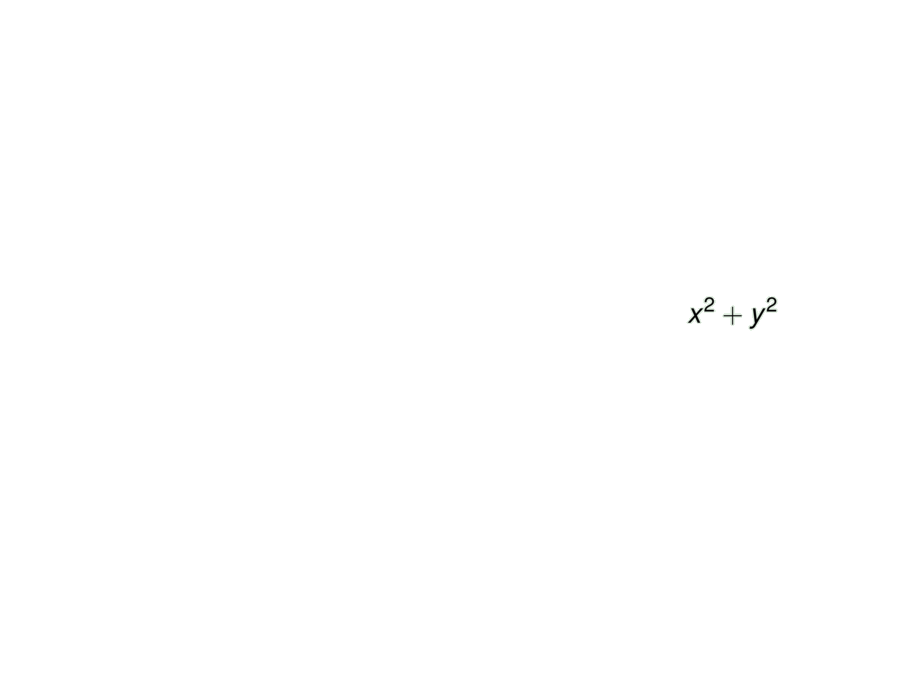
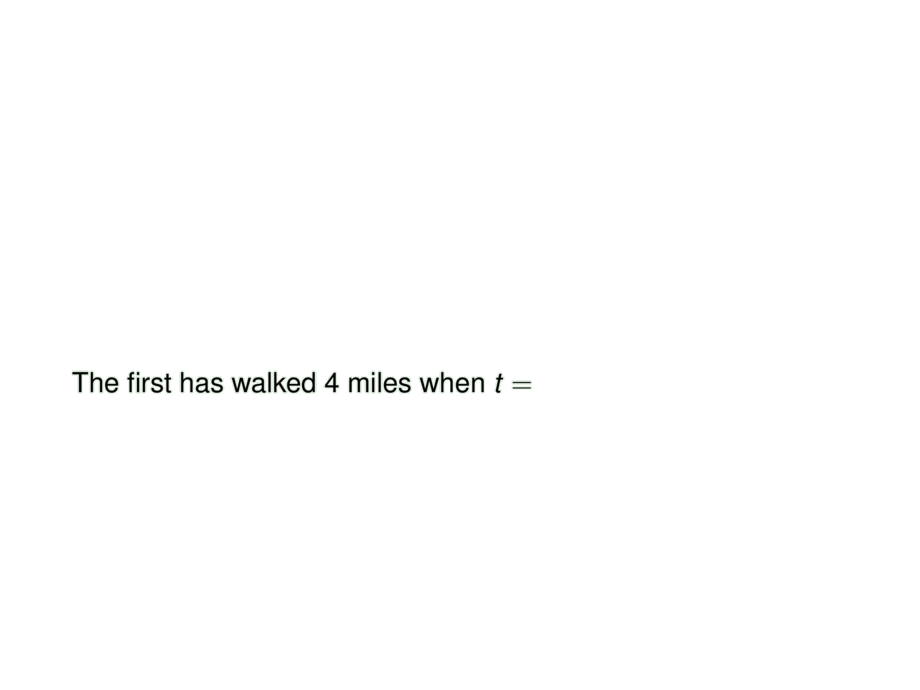
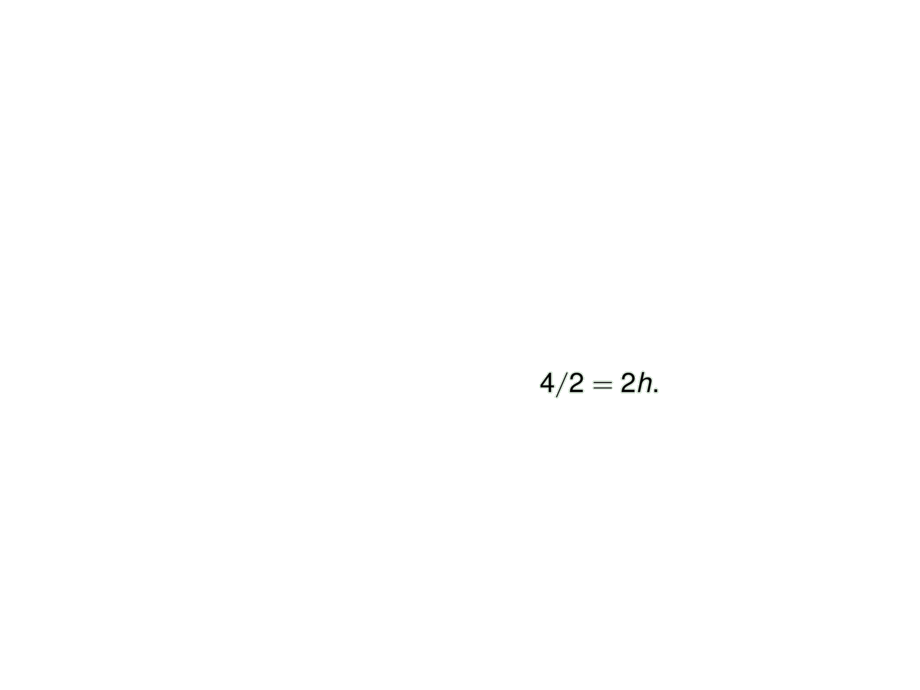
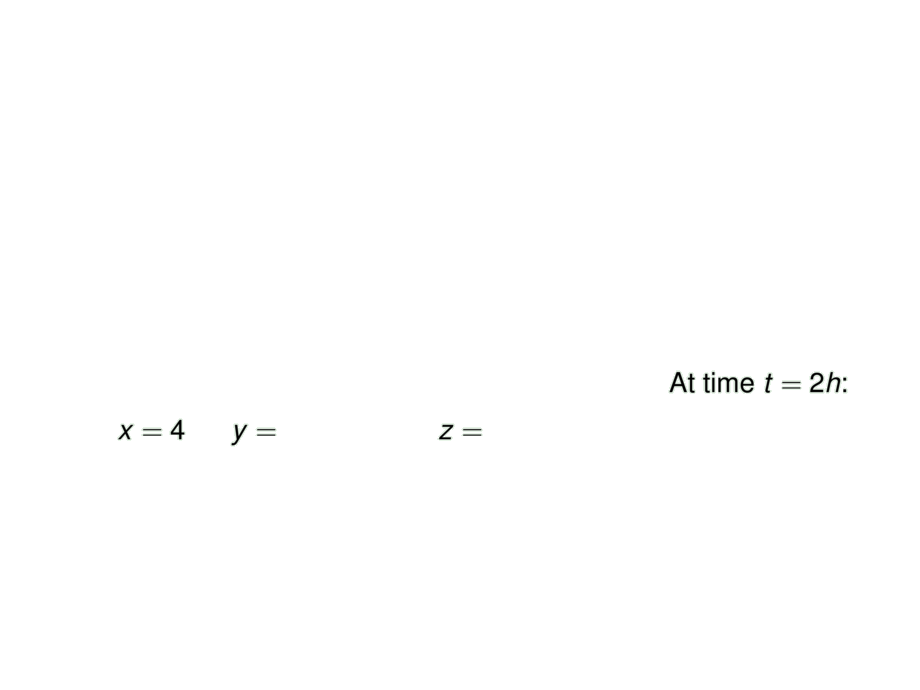

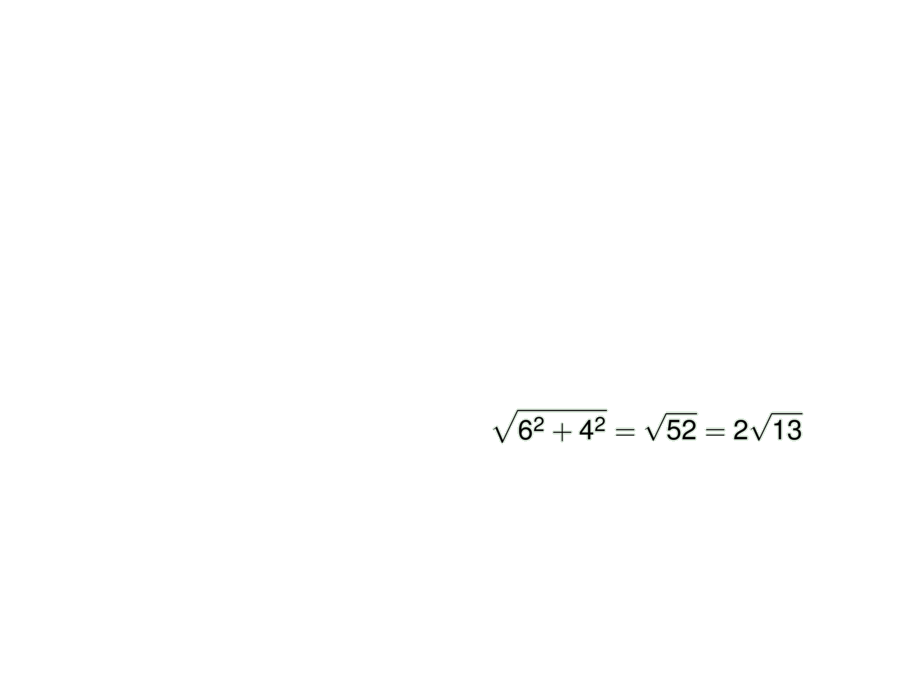
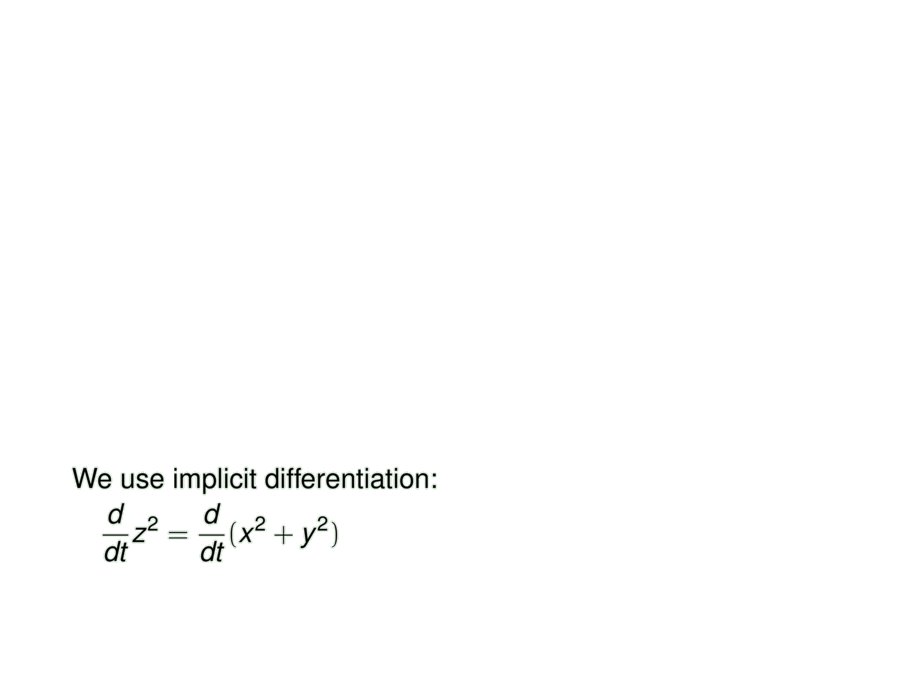
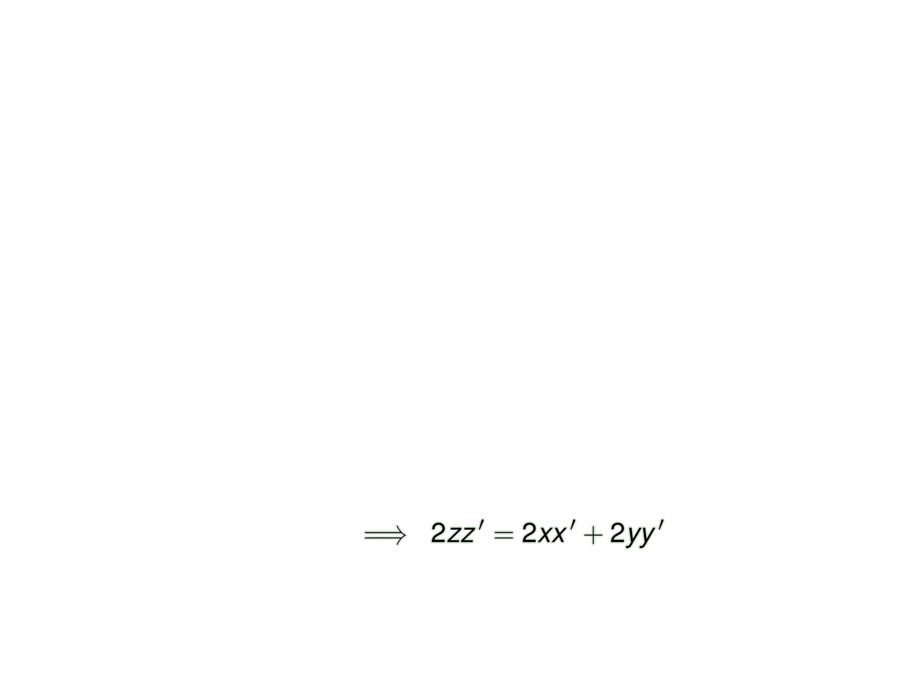
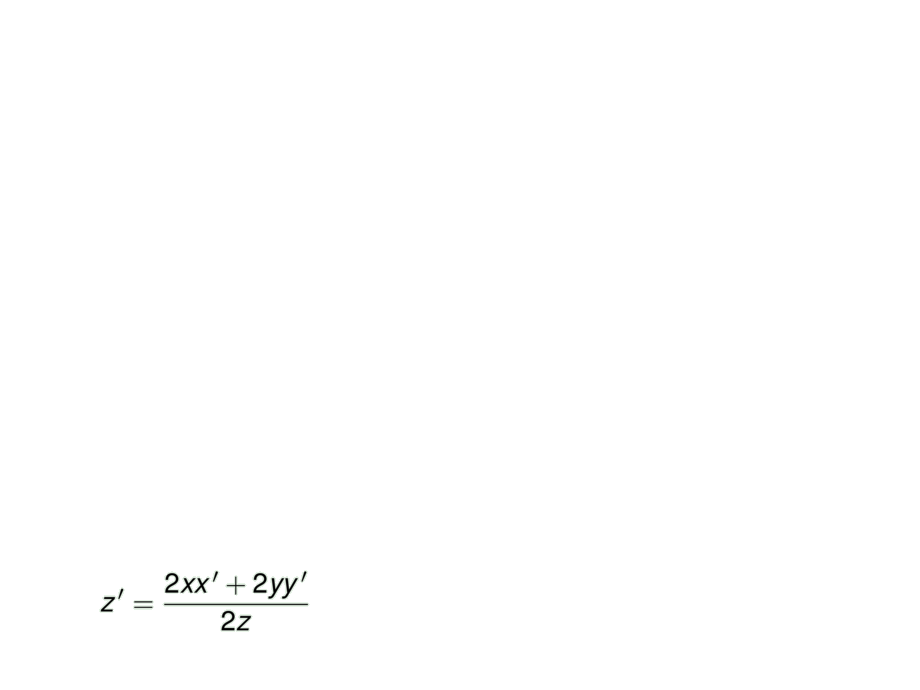
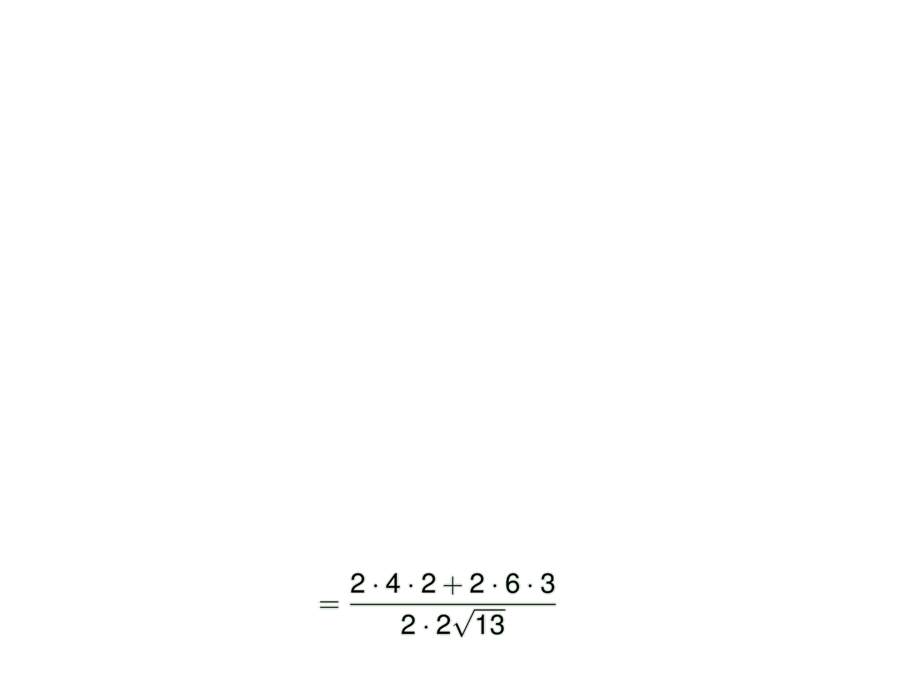
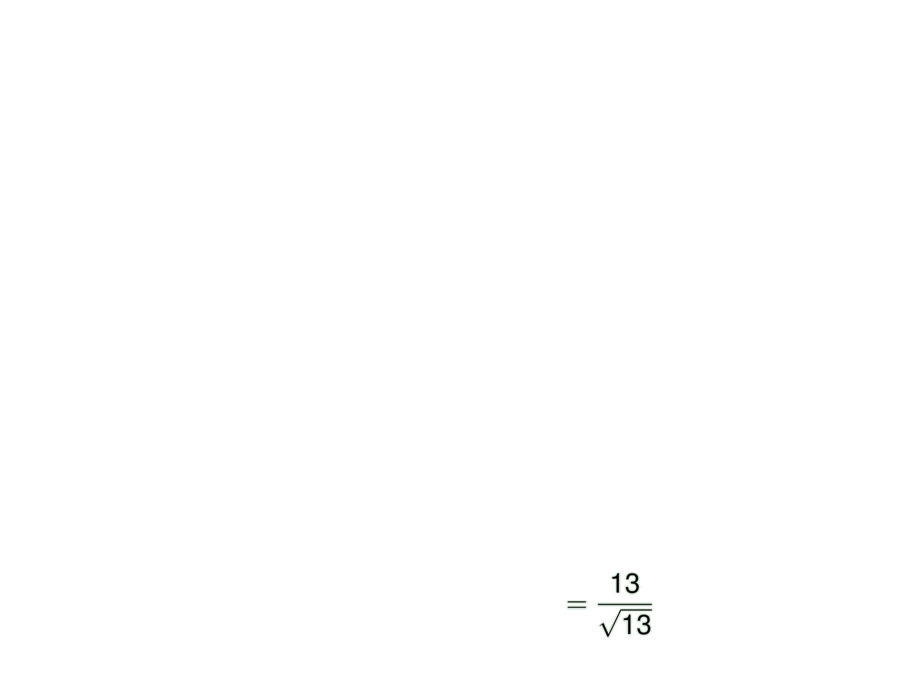
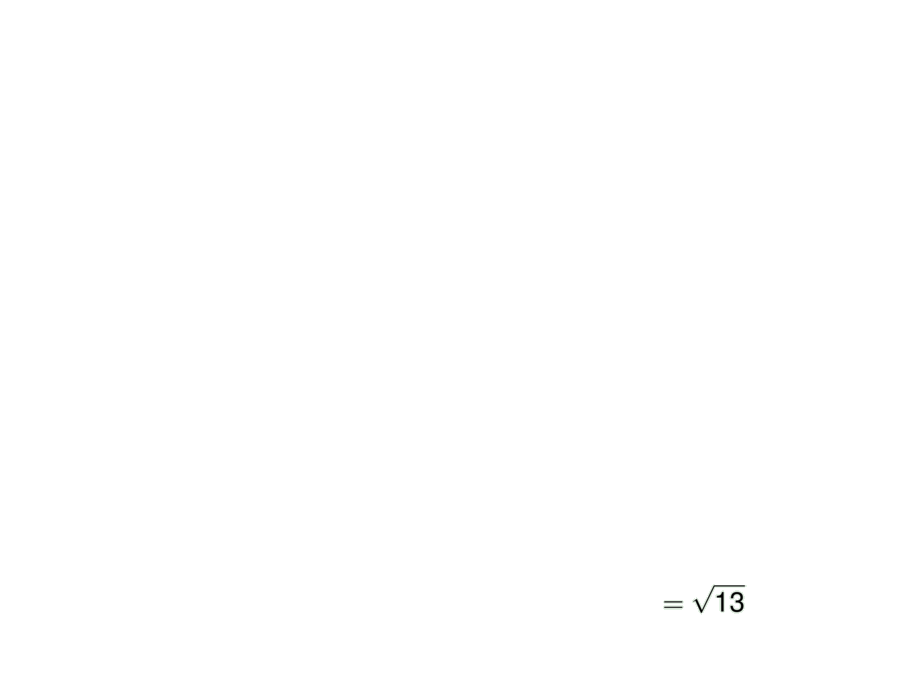

















































































20/176
\begin{frame}
\frametitle{Review - Midterm Exam 3}
\begin{exampleblock}{}
Two people are standing together. One begins to walk east at a rate of 2 miles per hour,
and at the same time the second begins to walk north at a rate of 3 miles per hour.
How fast is their distance growing when the first has walked 4 miles?
\pause\medskip
\begin{minipage}{.2\textwidth}
\begin{tikzpicture}[default,ultra thick]
\draw[->] (0,0) -- node[below] {$x$} (1,0);
\draw[->] (0,0) -- node[left] {$y$} (0,1);
\mpause[1]{
\draw[dashed,shorten <= 2mm, shorten >= 2mm] (0,1) -- node[above right] {$z$} (1,0);
}
\end{tikzpicture}
\end{minipage}
\begin{minipage}{.79\textwidth}
\pause\pause
We know that
\pause
\begin{talign}
\frac{d}{dx} = 2 &&
\frac{d}{dy} = 3 &&
\mpause[1]{z^2 = }\mpause{x^2 + y^2}
\end{talign}
\end{minipage}
\pause\pause\pause\smallskip
The first has walked $4$ miles when $t = \pause 4/2 = 2h$.
\pause
At time $t = 2h$:\vspace{-.5ex}
\begin{talign}
x = 4 && y = \mpause[1]{2*3 = 6} && z = \mpause{\sqrt{6^2 + 4^2} = \sqrt{52} = 2\sqrt{13}}
\end{talign}
\pause\pause\pause
We use implicit differentiation:\vspace{-.5ex}
\begin{talign}
&\frac{d}{dt} z^2 = \frac{d}{dt}(x^2 + y^2)
\mpause[1]{\;\implies\; 2zz' = 2xx' + 2yy'} \\
&\mpause{z' = \frac{2xx' + 2yy'}{2z}}
\mpause{= \frac{2 \cdot 4 \cdot 2 + 2\cdot 6 \cdot 3}{2\cdot 2\sqrt{13}}}
\mpause{= \frac{13}{\sqrt{13}}}
\mpause{= \sqrt{13}}
\mpause{\approx 3.6}
\end{talign}\vspace{-1.25ex}%
\pause\pause\pause\pause\pause\pause\pause
Their distance increases with \alert{$\sqrt{13}$ miles per hour}.\vspace{-.6ex}
\end{exampleblock}
\end{frame}

